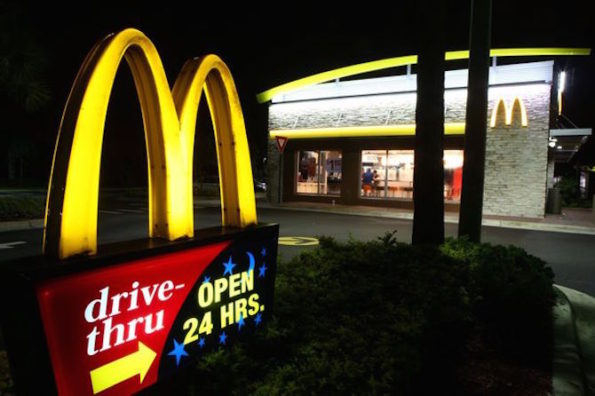Search
To search for an exact match, type the word or phrase you want in quotation marks.
A*DESK has been offering since 2002 contents about criticism and contemporary art. A*DESK has become consolidated thanks to all those who have believed in the project, all those who have followed us, debating, participating and collaborating. Many people have collaborated with A*DESK, and continue to do so. Their efforts, knowledge and belief in the project are what make it grow internationally. At A*DESK we have also generated work for over one hundred professionals in culture, from small collaborations with reviews and classes, to more prolonged and intense collaborations.
At A*DESK we believe in the need for free and universal access to culture and knowledge. We want to carry on being independent, remaining open to more ideas and opinions. If you believe in A*DESK, we need your backing to be able to continue. You can now participate in the project by supporting it. You can choose how much you want to contribute to the project.
You can decide how much you want to bring to the project.

There’s oscillation between light and darkness, an existential dialectic that places you in front of a panorama of things, a precarious equilibrium. All the lights of the city, the wasteland of the outskirts is in the dark. Now you are at this exact frontier, the experience of the vision acquired brings you close to something you can’t process entirely with your intellectual resources. From here you hear how your innards emit sounds, there’s something very carnal about all of it. You’re driving in silence along a road. In the distance you see something. There’s a point of light; it’s undoubtedly a sign. You approach it. The sign results somewhat familiar. You approach it. It shines with a golden twinkle. Drive-thru. You’ve reached a place; that’s certain. Or perhaps it’s no place. Wake up.
To begin reading something with the illusion of an altered state. To set in play right from the beginning what has always seemed to be the most interesting thing about the phenomenon of junk food, that is, the atmosphere it evokes. It begins in the stomach, in the intimacy of the docile bodies, and ends up as a general vision of a sort of tableau vivant, where everything moves slowly, and everything seems familiar albeit inexplicably disturbing. I have the sensation that American culture, as the originator of the phenomenon, having colonised the collective imaginary with this approximation to a mysticism that constitutes the great national narrative of heroism and success, has given rise to the possibility that existence doesn’t move in a dual and exclusive plane between the real and the fictitious. So much as a new order of things has been established, where an existence in a state in which both planes are indissoluble is feasible. From a hypothesis of heterodox cultural criticism, it’s possible to link this psychic place, technically definable as a delirium, to something akin to spirituality, in short to an essentially poetic force.
In the panoramic views of large American cities, the points of light are absent signs, freed from their semiotic charge, configuring a large post-Ford desert. They indicate places in which tiny, personal evolutions interconnect in places of communion – the petrol station, the fast-food restaurant, the basketball pitch. The urban grid, a failed attempt to mitigate the chaos, is organised according to the location of these points of light. With the same system of tentacles, the presence of junk food naturally hovers over artistic practices.
Contemporary art has included it in its language as one more element of cultural critique, rereading its aesthetic potential to use it as a symbol of the neoliberal context. Even though it’s true this potential exists, its use is similar to the overdose it provokes in the organism, prone to fall into a spectacle that is no longer self-critical. A list of examples of its inclusion in the art scene over the last few years begins with the retrospective of the brothers Jake and Dinos Chapman in the Serpentine Gallery in 2014, titled Come and See, where one could see Ronald McDonald crucified in an infernal scene inspired by El Bosco.
In 2011, Paul McCarthy presented in Hauser&Wirth what begins as a cumulus of detritus in the studio and ended up as the history of Pig Island, with Bush, the seven dwarfs and cubes of fried chicken from KFC. That same year, the pop art of Mel Ramos was seen at the Albertina in Vienna, with reified women leaning on a bottle of ketchup, emerging from amidst gigantic McFries or sleeping on a Toblerone. The Danish collective Superflex, in its film Flooded McDonald’s from 2009, constructed a replica of the interior of a McDonald’s restaurant and flooded it, in a deluge yet to come that would take place significantly, in particular in a place like that.
The theoretician George Ritzer expands on Max Weber’s thesis based on the rationalisation of his concept of McDonaldization. If rationalisation is the mechanism by which social behaviours are directed by redesigned and calculated values, instead of the emotional values originating the tradition, McDonaldization is the triumph of the irrationality of rationalisation. Just as Weber uses bureaucracy as an example, the fast food chain exemplifies the subjection of human values to the modus operandi of capitalism in a particularly perverse way. As Eric Schlosser argues in Fast Food Nation, to feed yourself, perhaps just “to eat” in this case, can’t be yet one more cultural landmark of the metropolis, it’s not listening to pop music, nor seeing Hollywood films, or wearing jeans. To eat fast food is not just a cultural use, it has an impact on the very organism of the individual (put the body before the BigMac) that in turn has an impact on entire sections of the population that pass to form part of new health policies.
The atavistic dimension of food leaves no margin for this type of situation of radical contradiction. Just as the kitchen can be understood as the symbolic place where energies, destined to the transformation of elements, converge, as in alchemy, through the use of potentially lethal instruments. The dynamics underlining contemporary alimentary consumption can be visualised as a state of intimate contradiction upon which to cement a cultural future. Eating passes to become an activity of entertainment, abandoning its primary function as nutrition tied to affection and care. The showiness dresses up junk food as the epitome of eating in the 21st century (with its B-side of the star-studded gastronomy of white heterosexual men that have taken over jet-set cuisine) constituting a metaphor for the entire state of things. The experience it provides is based on emotions, its ultra-facile accessibility the fantasy of a guaranteed survival in an essentially hostile environment.
The shiny surfaces, the artificial shapes, the colours excite you, mood enhancing, an ego-boost. There’s a sort of candour in the infantile packaging, the plastic gadgets and cartoon characters; for which you’d like to ask, but you’re a grown-up, and you’re embarrassed. What you’re going to consume is the materialisation of a euphemism, a celebration of the simulacrum. Little cardboard boxes, foam packaging, trays. Everything is arranged as if in a scenario to evoke the old tranquilising sensation of the game. There’s no blood anywhere. Open 24 hours a day; it welcomes you. The clown with the smiling face, the old man with goatee and glasses, the party King, forms an ancestral connection with a magnanimous father that feeds you with nothing to confess, no sacrifice, repent or atonement. An ethics of care. Those elements considered as the most primary, that function in direct relation with the concepts of life and death, are inscribed with the potential of a poem. Just as in literature there’s been a need to divert language, to open up a breach to generate another form of meaning, a poetics is constructed based on leftovers.
The existence of junk food can be seen as an anecdotic element or as a more or less atrocious consequence of the neoliberal system. But it can also be read as a punctum, an interior wound that connects you with a version of yourself in the shadows, a cave in the wood of the periphery of the city where amongst the remains of half-built estates you can experiment with something that in some way relates to poetry. This experience doesn’t come from the sublime in art, or from the civic values of brotherhood or from logos, it seems to come from a self-destructive gesture, an aporia. And this impossibility, this unresolvability, is what leads to the appearance of something unexpected, a certain type of beauty.

Alba Mayol Curci is an artist and philologist. She investigates peripheral narratives in which emotional mechanisms can function as an activism.
"A desk is a dangerous place from which to watch the world" (John Le Carré)